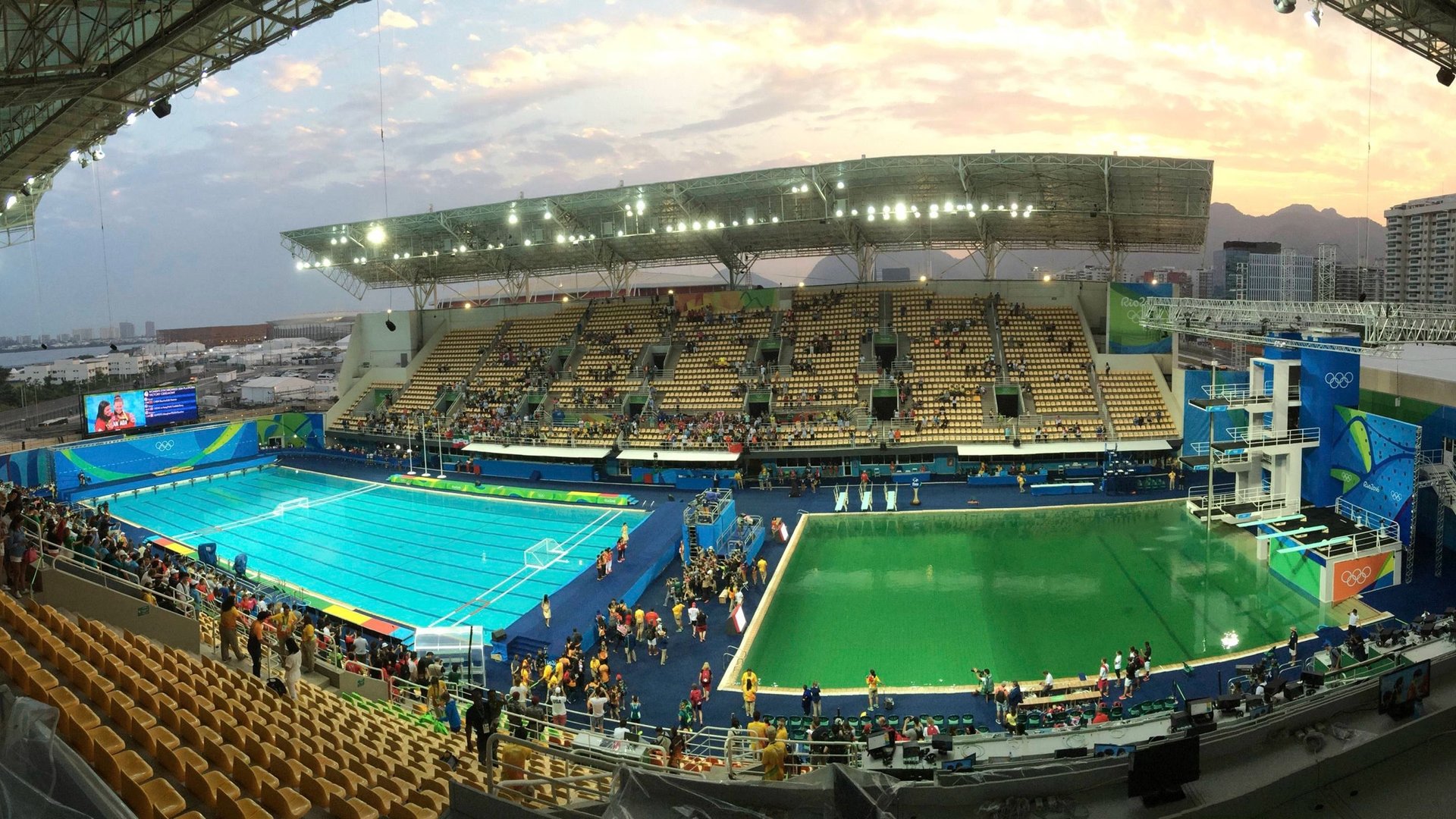The science behind why an Olympic diving pool in Rio suddenly turned a swampy green
Just before the women’s synchronized 10-meter platform diving competition in Rio on Tuesday (Aug. 9), the pool water turned from bright blue to a swampy green. British Olympian Tom Daley and American David Boudia, who won a Bronze and Silver medal respectively at the men’s diving event in the same pool when it was a clear blue, took to Twitter to express disbelief at the unsettling color change.


Just before the women’s synchronized 10-meter platform diving competition in Rio on Tuesday (Aug. 9), the pool water turned from bright blue to a swampy green. British Olympian Tom Daley and American David Boudia, who won a Bronze and Silver medal respectively at the men’s diving event in the same pool when it was a clear blue, took to Twitter to express disbelief at the unsettling color change.
What actually happened?
The green hue seen in the water at the Olympic diving venue Tuesday was “due to a proliferation of algae caused by heat and lack of wind” in the venue, the Rio 2016 Local Organizing Committee told CNN today.
When the chlorine level drops below the recommended 1-3 parts per million (ppm), which is the equivalent of 3-5 milligrams per liter of water, an algae bloom can occur—and chlorine can evaporate in the heat. ”When it gets hot and there’s a lot of sun, it burns the chlorine off and feeds the algae,” Jonathan Schulhoff, retail manager at a Arthur Edwards Pool and Spa Center in New York, told Quartz. Algae need to photosynthesize to grow so it’s very likely to surface in a hot country like Brazil, Schulhoff explained.
Algae spores can enter a swimming pool, brought in by wind, rain or even contaminated swimsuits or equipment. Conditions like a chemical imbalance in the pool water, warm temperatures, sunlight or the presence of nutrients like nitrates or carbon dioxide can all lead to an algae bloom.
Is it safe?
The color of a pool is not necessarily indicative of its safety. As long as the chlorine is corrected, the color may not readjust, but the pool won’t pose any human health threats in the short-term.
The algae itself is just a plant, and it’s not dangerous. “When you swim in a lake, there’s a whole lot of algae and other stuff going on in a lake,” Drew Bagin, B&B Pool and Spa Center’s corporate head, said in an interview with Quartz. “But I’m okay, you’re okay.”
Bagin explains that the threat of contracting infection or disease is fairly low. Parasites like Cryptosporidium and Giardia may appear in unsanitary water but they tend to more commonly affect pools with infants and children because, well, kids tend to lack personal hygiene. In a diving well used only by professional athletes, this is not really a concern.
Plus, the committee already tested the water after the fact and announced it was safe.
Why is the water polo pool adjacent to the diving well still blue?
One possibility, says Bagin, is that the diving pool’s filter may not be running long enough; when water is still, an algae bloom becomes more probable. So perhaps the water polo pool’s filter was running long enough, and the diving well’s wasn’t. However, at such a huge sporting event, the filters are probably running around the clock for both pools.
The better explanation? “Just bad water chemistry,” Bagin speculates. Even if both pools had the same chlorine levels, the one hosting the diving competitions may have not had enough stabilizers for the chlorine. Stabilizers are like a sunblock for the chlorine: they protect it from being eaten away by the sun’s ultraviolet rays and evaporating.
Can it be fixed?
“Water tests at Maria Lenk Aquatic Center’s diving pool were conducted and there is no risk to the athletes’ health,” the committee wrote in an email to Quartz. “We did an investigation and the causes are a decrease in alkalinity of the pool. The increased use of the pool in the last few weeks is the reason for the change in color. We have treated the pools and the alkalinity levels have already improved. We anticipate the alkalinity and color will return to normal very shortly.”
After testing the water, the committee concluded that there was no risk to athletes, CNN reported. It also said the diving well should be back to its normal color for the events on Wednesday.
However, the committee’s promise to fix the color might be hard to follow through on. “Once the algae blooms, you have to super chlorinate the pool, which will burn [the algae] all out,” Schulhoff said. Shock treatment like this requires the chlorine levels to get above 10ppm, and ”when the chlorine is that high, you can’t be in it” for at least the next 24 hours, Schulhoff said. And even after that, it can take days or weeks for chlorine levels to be fully restored to normalcy. Dead algae particles also have to be physically removed. In his experience with residential pools, Schulhoff says, the entire process can take three to five days. With Olympic-sized pools, it would likely take longer.
Update, Aug. 10, 3:30 PM EST: During the final of the men’s synchronized 3m springboard competition, the pool was still green.